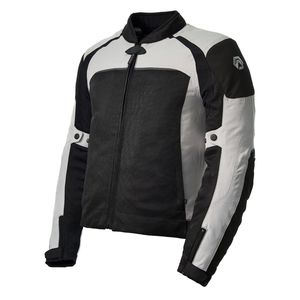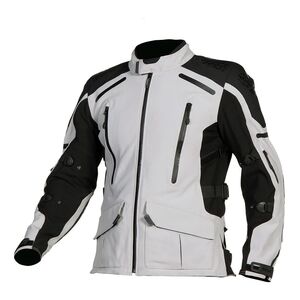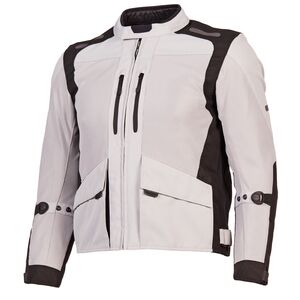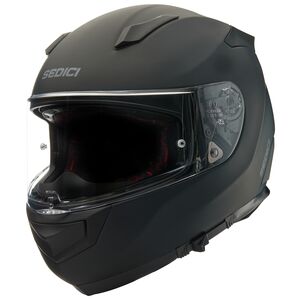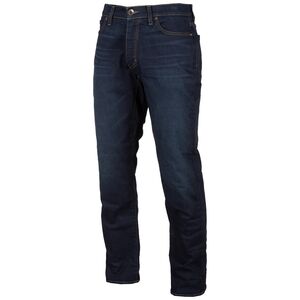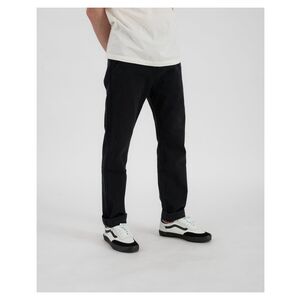What is the best beginner motorcycle? Ohhh my goodness, the listicles that exist to answer that question, I’m sure there are hundreds. I like to think that this time, here at Common Tread, we did a little better.
In the latest episode of Common Tread XP, we aimed to dig deeper than basic specs to expose some of the truths behind owning a motorcycle. Or, at least have a little fun exploring the not-so-obvious differences between various types of bikes. We did the usual due diligence, but we also tipped them over, picked them up, and changed the oil. Then, we asked every machine to walk a mile in the other’s shoes. What’s it like, cruiser or sport bike, to ride down a dirt road? How does it feel, dual-sport or ADV, to be on a race track? These are the questions that we think need to be asked.
We’re making entertainment, sure, but it’s only fair to keep in mind that most of our crew are classically trained motorcycle muckrakers — we like to have fun, and at the same time we want to get to the bottom of the task at hand. Giving an account that will help people make a decision is meaningful for the CT staff.

As silly as it might seem, that was the goal with the tip-over test, where we laid each of the bikes on their side and then marked all of the parts that touched the ground. Calculating the cost of replacing those parts gives a basic idea of how financially painful a parking-lot mistake could be and also a rough estimate of what the cost of ownership would look like. That’s at least as pertinent as talking about the MSRP.
At any rate, our goal was to highlight five different types of motorcycle, each one for sale for less than $6,000, that we would recommend to a new or returning rider and that firmly holds the flag of its category. Street-legal bikes, that is, and ones that are eligible for highway travel — no small dirt bikes or bop-about mini bikes allowed. Before we could do that, though, we had to choose the bikes, and that process in itself might have actually taken longer than filming the episode.

Why the BMW G 310 GS, Honda CRF300L, Kawasaki Ninja 400, Royal Enfield Meteor 350, and all-electric Sondors MetaCycle? You might be thinking, for example, that it’s pretty flimsy to “recommend” a Royal Enfield without even a mention of Honda's venerable Rebels, 300 and 500. That would be a fair criticism, among others.

Even the easy stuff was complicated. The MetaCycle from Sondors is the only electric motorcycle that even had a chance to keep up with the foursome of gas burners that also has an MSRP under $6,000. And, as it happens, at $6,500 it doesn’t even have that. It was $5,000 at one point. Then it went up. Now there’s, uhhh, a rebate…? Also, a bunch of people were apparently fired from the company right around the time we wrote the first-ride piece and it’s not totally clear that the company will exist by the time this article is published. That’s Silicon Valley, baybay!

The obvious choice in this strata of motorcycles (in my opinion) is the Zero FXE, but bringing a $13,000 bike into a $6,000 challenge is tipping the scales a little too much, even for a battery at a gasoline fight. For what it’s worth, we considered a scooter in place of an electric option but those people were outvoted and we couldn’t get a Honda ADV150 or Yamaha XMAX in time for the video. If we’d had a sixth rider and enough GoPros to film it, we would have included a step-through machine. We are sorry, scooter lovers, truly.

Kawasaki’s Ninja 400 is just plain brilliant. It’s arguably better than a Kawasaki Ninja 650, and definitely a step above a Yamaha YZF-R3 or a Honda CBR300R. KTM’s RC390 would be a valid choice, but it wasn't available for this test and the Weenja is just so darned easy to recommend we hardly gave it another thought. We could have opted for a naked sport bike, too, like Kawasaki’s own Z400, KTM’s 390 Duke, or the 200 Duke, for that matter, but it felt like including a true, faired sporting machine was what the people would want.

As for the Honda CRF300L holding the dual-sport torch, it was a tough call. Kawasaki’s KLX300 is a little more aggressive and might be slightly more capable. Then we realized that that’s not what this test is about. It’s about approachability, affordability, and reliability. Hondability, in other words.

BMW’s G 310 GS had the hardest row to hoe. It’s not the first small ADV I would recommend, personally. I would be looking hard at a Kawasaki Versys-X 300, and I’ll admit I’m sad that an ABS-equipped version is over the $6,000 budget but hoo-boy, that’s a great little bike. Again, the appropriate KTM (this time the 390 Adventure) should be in the conversation, but the price starts with the number seven and that just wouldn’t fly.

Heck, even Honda’s CRF300L Rally was too expensive for this test. The other motorcycle that nearly made it to the top of the heap was Royal Enfield’s Himalayan, which is a delightful little slice of adventure. It’s low and slow, and it depends on your perspective whether that is good or bad. The CSC RX4, too, was on the list but we've learned that we don't like it as much as the Himalayan. And so the G 310 prevailed, because ultimately the Indian-built baby GS looks the part and does everything a small ADV should, including having a base price of under $6,000. And it says “GS” on the side which, even though it’s a far cry from the glittering glory of an R 1250 flagship, means something.

So, finally, what about that Royal Enfield? Is there any defensible reason to feature it in a group test like this, where I’ve preached so hard about bikes making sense? A bike that requires the valves be checked twice as often as the G 310 GS and 10 thousand miles sooner than the Honda or Kawasaki? Honda’s Rebel 300 feels like a toy, especially on the highway, and the Rebel 500 is priced out, but that’s not even the main reason the Meteor belongs here. It’s relevant because it’s charming, dammit.

It’s handsome and characterful. Pleasant to use and interesting to look at, without being showy or trying too hard. This is all subjective, of course, and maybe you disagree. What you almost certainly cannot deny is that a motorcycle speaking to your heart more than your mind is often what makes each one special to each rider.
We hope that you learn a thing or two from our slightly deranged beginner-bike experience. Maybe you didn’t realize a Ninja 400 could shimmy down a dirt trail quite like that, or that so many so-called professional motorcyclists could miss that many turns. If you take one thing away from this, remember that you can crunch numbers in spreadsheets or come up with as many wacky tests as you like — what you’re mostly likely to find is that it doesn’t matter much where the bike you wanted finished. What matters is that you want it.
















